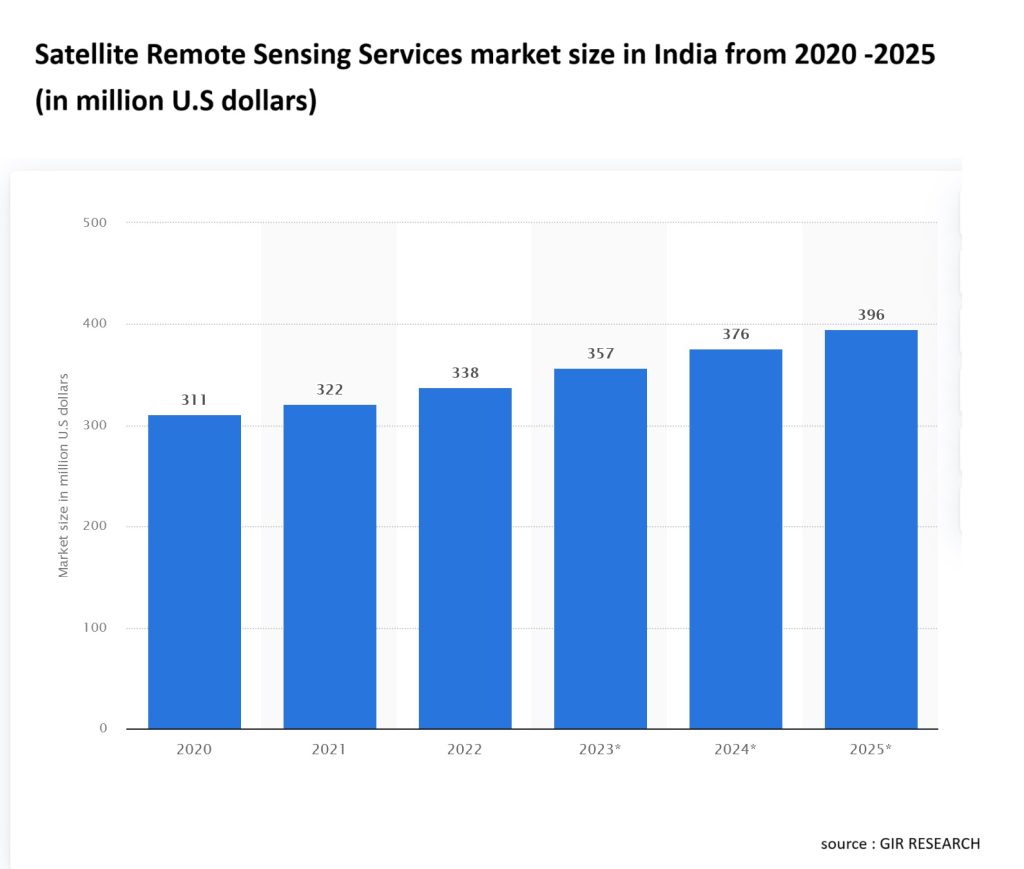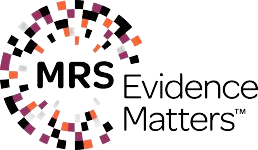Report Overview
- Understand the latest market trends and future growth opportunities for the Satellite Remote Sensing industry globally with research from the Global Industry Reports team of in-country analysts – experts by industry and geographic specialization.
- Key trends are clearly and succinctly summarized alongside the most current research data available. Understand and assess competitive threats and plan corporate strategy with our qualitative analysis, insight, and confident growth projections.
- The report will cover the overall analysis and insights in relation to the size and growth rate of the “Satellite Remote Sensing Market” by various segments at a global and regional level for the 2010-2030 period, with 2010-2021 as historical data, 2022 as a base year, 2023 as an estimated year and 2023-2030 as forecast period.
Description:
- In the changed post COVID-19 business landscape, the global market for Satellite Remote Sensing estimated at US$2.8 Billion in the year 2022, is projected to reach a revised size of US$5.7 Billion by 2030, growing at a CAGR of 9.4% over the analysis period 2022-2030.
- Military & Intelligence, one of the segments analyzed in the report, is projected to record a 8.7% CAGR and reach US$2 Billion by the end of the analysis period. Taking into account the ongoing post pandemic recovery, growth in the Agriculture & Living Resources segment is readjusted to a revised 9.6% CAGR for the next 8-year period.
- The Satellite Remote Sensing market in the U.S. is estimated at US$1.1Billion in the year 2022. China, the world`s second largest economy, is forecast to reach a projected market size of US$832.6 Million by the year 2030 trailing a CAGR of 11.5% over the analysis period 2022 to 2030. Among the other noteworthy geographic markets are Japan and Canada, each forecast to grow at 8.1% and 8.9% respectively over the 2022-2030 period. Within Europe, Germany is forecast to grow at approximately 8.7% CAGR.

MARKET DATA INCLUDED
- Unit Sales, Average Selling Prices, Market Size & Growth Trends
- COVID-19 Impact and Global Recession Analysis
- Analysis of US inflation reduction act 2022
- Global competitiveness and key competitor percentage market shares
- Market presence across multiple geographies – Strong/Active/Niche/Trivial
- Online interactive peer-to-peer collaborative bespoke updates
- Market Drivers & Limiters
- Market Forecasts Until 2030, and Historical Data to 2015
- Recent Mergers & Acquisitions
- Company Profiles and Product Portfolios
- Leading Competitors
The Global Satellite Remote Sensing Market Report Includes:
- In-depth exploration of the industry, encompassing definitions, classifications, and the industry’s interconnected structure.
- Examination of pivotal supply-side and demand trends.
- Detailed breakdown of both international and local products.
- Insight into historical volume and value dimensions, along with market shares of companies and brands.
- Five-year predictions regarding market trends and growth.
- A robust and transparent research methodology conducted within the country.
- A blend of qualitative and quantitative analysis, grounded in segmentation that considers economic and non-economic aspects.
- Provision of market value data (in USD Billion) for every segment and sub-segment.
- Geographical, regional, national, and state-wise analysis.
- A succinct overview of the commercial potential inherent in products, technologies, and applications.
- Company profiles of key market players operating within the product category.
- Descriptions of attributes and manufacturing processes.
- Segmentation based on type, application, end-users, regions, and other factors.
- Discussion about the current state, challenges, innovations, and future requirements of the market.
- Examination of the market based on application and product sizes: utility-scale, medium scale, and small-scale.
- Country-specific insights and analyses for major countries and regions.
- Coverage of historical context, pivotal industrial developments, and regulatory frameworks.
- Analysis of competitive movements, including agreements, expansions, new products, and mergers & acquisitions.
- Exploration of opportunities for stakeholders and a depiction of the competitive landscape among market leaders.
- Specialized coverage of significant global events, such as the Russia-Ukraine war, global inflation, China’s “zero-Covid” policy shift, supply chain disruptions, trade tensions, and the risk of recession.
- Evaluation of global competitiveness and market shares among key competitors.
- Presence assessment across various geographical markets: Strong, Active, Niche, Trivial.
- Online, interactive, peer-to-peer collaborative updates.
- Access to digital archives and the Market Research Platform.
- Complimentary updates for a two-year period.
Satellite Remote Sensing Reports Scope and Segments:
| Report Attribute | Details |
| Market size in 2022 | US$2.8 Billion |
| Market size forecast in 2030 | US$5.7 Billion |
| Growth Rate | CAGR of 9.4% from 2022 to 2030 |
| Base year for estimation | 2022 |
| Historical data | 2015 – 2022 |
| Forecast period | 2023 – 2030 |
| Quantitative units | Revenue in USD million and CAGR from 2023 to 2030 |
| Report coverage | Revenue forecast, company ranking, competitive landscape, growth factors, trends, DROT Analysis, Market Dynamics and Challenges, and Strategic Growth Initiatives
COVID-19 Impact, Market Growth Trends, Market Limiters, Competitive Analysis & SWOT for Top Competitors, Mergers & Acquisitions, Company Profiles, Product Portfolios Market Size, Market Shares, Market Forecasts, Market Growth Rates, Units Sold, and Average Selling Prices. |
| Segments covered | Technology, Type, Product, Resolution, Platform, Application and Region |
| Regional scope | North America; Europe; Asia Pacific; Latin America; Middle East and Africa and rest of the world |
| Country scope | United States, China, Japan, Germany, India, United Kingdom, France, Brazil, Italy, Canada, South Korea, Australia, Russia, Spain, Mexico, Indonesia, Netherlands, Switzerland, Saudi Arabia, Turkey, Taiwan, Poland, Sweden, Belgium, Thailand, Austria, Nigeria, Argentina, United Arab Emirates, Iran, Norway, Israel, Ireland, Malaysia, Denmark, Singapore, Philippines, Pakistan, Finland, Chile, Vietnam, Greece, Czech Republic, Romania, Portugal, Peru, New Zealand, Hungary, Iraq, Bangladesh, Qatar, Kuwait, Ukraine, Egypt, Kazakhstan, Colombia, Angola, Algeria, Morocco, Slovakia, Oman, Puerto Rico, Ethiopia, Sudan, Kenya, Ghana, Dominican Republic, Myanmar, Tanzania, Ecuador, Belarus, Guatemala, Lithuania, Latvia, Sri Lanka, Nepal, Lebanon, Slovenia, Bahrain, Libya and others |
| Key companies profiled | 21AT; AABSyS IT Pvt. Ltd.; Airbus Defence and Space; AirSage; Amzon; Antrix Corporation; Arianespace; BAE Systems; Ball Aerospace & Technologies Corp.; Beijing Space View Technology; BlackSky Global; Boeing Company; Capella Space; Descartes Labs; DigitalGlobe; DMCii (Disaster Monitoring Constellation International); Earth-i Ltd.; e-GEOS; EKOFASTBA; Esri; Eutelsat; General Dynamics Mission Systems, Inc.; Geo Sense; GeoOptics; GHGSat Inc.; Google; Harris Geospatial Solutions; Hexagon AB; IAI (Israel Aerospace Industries); ICEYE; ImageSat International N.V.; Intelsat; ISRO (Indian Space Research Organisation); L3 Harris Technologies; Lockheed Martin Corporation; Mallon Technology; Maxar Technologies Inc.; MdDA Information Systems Inc.; Mitsubishi Electric Corp.; Nanoracks; Northrop Grumman Corporation; OneWeb; Orbital Insight; Parrot SA; PixxelSpace India Private Limited; Planet Labs Inc.; Precisionhawk; Raytheon Technologies Corporation; Remote Sensing Solutions GmbH; Rocket Lab; Roscosmos; Safran Group; Satellite Imaging Corporation (SIC); Satellogic; Scanex; SES S.A.; SI Imaging Services; SIAC (Singapore Aerospace Industries); SIIS (Shanghai Institute of Satellite Engineering); Skybox Imaging; Spacex; Spire Global Inc.; SSTL (Surrey Satellite Technology Limited); Telespazio; Terra Bella (Google Earth); Thales Group; Trimble, Inc.; UrtheCast; VHR Satellite; Virgin and others |
| Customization scope | Free report customization (equivalent up to 20 analyst’s working days) with purchase. Addition or alteration to country, regional & segment scope. |
| Report Format | PDF, PPT, Excel & Online User Account |
Global Satellite Remote Sensing Market Report Segmented by:
Satellite Remote Sensing Market By Application:
- Agriculture
- Engineering & Infrastructure
- Environmental & Weather
- Energy & power
- Transportation & Logistic
- Defence & Security
- Maritime
- Insurance
- Academic & Research
- Earth Observation
- Telecommunication
- Meteorology
- Mapping & Navigation
- Disaster Management
- Others
Satellite Remote Sensing Market By Platform:
- Satellite
- UAVs
- Manned Aircraft
- Ground
- SATCOM
- Radar
- EO/IR
Satellite Remote Sensing Market By End Use:
- Military & Government
- Commercial
Satellite Remote Sensing Market By Resolution:
- Spatial
- Spectral
- Radiometric
- Temporal
Satellite Remote Sensing Market By Technology:
- Active
- Passive
Satellite Remote Sensing Market By Type:
- Aerial Photography & Remote Sensing
- Data Acquisition & Analytics
Satellite Remote Sensing Market By Region:
- North America
- Asia Pacific
- Europe
- Middle East & Africa
- Latin America
- Rest Of The World

Top Companies Covered in Global Satellite Remote Sensing Market Report:
| 21AT | Lockheed Martin Corporation |
| AABSyS IT Pvt. Ltd. | Mallon Technology |
| Aapah Innovations | Malvern Panalytical Ltd |
| Airbus Defence and Space – Intelligence | Maxar Technologies Inc. |
| AirSage | MdDA Information Systems Inc. |
| Amzon | Mitaka Europe GMBH |
| Antrix Corporation | Mitsubishi Electric Corp. |
| Aptomar | Nanoracks |
| ARGANS Ltd. | National Aeronautics and Space Administration (NASA) |
| Arianespace | NIRAS A/S |
| Atlogis Geoinformatics GmbH & Co. KG | Northrop Grumman Corporation |
| Auracle Geospatial Science – Remote Sensing Division | NSIL Corporation Limited |
| Axelspace | OneWeb |
| BAE Systems | ORBIT Communication Systems Ltd. |
| Ball Aerospace & Technologies Corp. | Orbital Insight |
| Beijing Space View Technology | Ornet Sdn Bhd. |
| BlackSky Global LLC | Pachama Inc. |
| Boeing Company | Parrot SA |
| Canadian Space Agency | PixxelSpace India Private Limited |
| Capella Space | Planet Labs Inc. |
| C-CORE | Planetek Hellas |
| CGG S.A. | Precisionhawk |
| Chang Guang Satellite Technology (CGSTL) | Raytheon Technologies Corporation |
| China Acdemy of Space Technology (CAST) | Remote Sensing Instruments (RSI) |
| China Aerospace Science and Technology Corporation (CASC) | Remote Sensing Solutions GmbH |
| China Great Wall Industry Corporation | Remote Sensing Systems |
| Chinese Academy of Sciences (CAS) – The Institute of Remote | Rocket Lab |
| cloudeo | Roscosmos |
| Commonwealth Scientific and Industrial Research Organisation | Safran Group |
| COROBOR Systems | Satellite Imaging Corporation (SIC) |
| Cyberswift LLC | Satellogic |
| Dauria Aerospace | SATPALDA |
| Descartes Labs | Satsense Solutions Limited |
| DigitalGlobe | Scanex |
| DMCii (Disaster Monitoring Constellation International) | Sensing and Digital Earth (RADI) |
| DNV AS | Sentinel Hub |
| Earth-i Ltd. | SES S.A. |
| e-GEOS S.P.A | Shaanxi Academy of Aerospace Technology Application Co., Ltd. |
| EGS, Inc. | SI Imaging Services |
| EKOFASTBA | SIAC (Singapore Aerospace Industries) |
| Elecnor Deimos | SIIS (Shanghai Institute of Satellite Engineering) |
| EOatDHI | Sinergise |
| Esri | Skybox Imaging |
| European Space Agency | Sky-Shine Corporation (M) Sdn Bhd |
| Eutelsat | Skywatch |
| Finapp | Slingshot Aerospace |
| GAF AG | South African National Space Agency |
| General Dynamics Mission Systems, Inc. | SPACE SHIFT Inc. |
| General Oceanics | Spacebel |
| Geo Sense | Spacex |
| Geofinancial Analytics | SpecTIR LLC. |
| Geoimage | Spectral Evolution |
| GeoOptics | Spire Global Inc. |
| German Aerospace Center (DLR) | SSTL (Surrey Satellite Technology Limited) |
| GHGSat Inc. | Stantec, Inc. |
| GISTDA | State Space Corporation ROSCOSMOS |
| Surrey Satellite Technology Ltd. | |
| Hangzhou Zetian Technology Co., Ltd. | Teledyne e2v |
| Harris Geospatial Solutions | Telespazio |
| Hexagon AB | Terra Bella (Google Earth) |
| Hi-phen | Terra Remote Sensing Inc. |
| HiView B.V. | Terrabotics |
| Hydroinnova LLC | Terramonitor |
| I. M. Systems Group Inc. (IMSG) | Thales Group |
| IAI (Israel Aerospace Industries) | The Remote Sensing Technology Center of Japan (RESTEC) |
| Iceye OY | The Sanborn Map Company, Inc. |
| ImageSat International N.V. | Trimble, Inc. |
| Indian Space Research Organisation (ISRO) | U.S. Naval Research Lab – Remote Sensing Division |
| Intellisense Systems, Inc. | umitron |
| Intelsat | UrtheCast |
| Intermap Technologies Corporation | VHR Satellite |
| Koei Company Limited | ViaSat, Inc. |
| Kongsberg Defence & Aerospace AS | Virgin |
| L3 Harris Technologies | VisionTech Inc. |
| LG Sonic | VTT Technical Research Centre of Finland Ltd. |
After Sales Support:
- Every updated edition of the report and full data stack will be provided at no extra cost for 24 months.
- Latest 2022 base year report.
- Free Updated edition of 2023 every quarter without any hidden cost.
- No user limitation for the report. Unlimited access within the organization.
- Unrestricted post-sales support at no additional cost
- Free report customization (equivalent up to 10 analyst’s working days) with purchase. Addition or alteration to country, regional & segment scope
- Global Industry Reports will support your post-purchase for a period of 24 months to answer any of your queries related to the following market and to provide you any more data needed, for your analysis.
- Option to purchase regional or selected Chapters from the report.
Key Questions Answered in Global Satellite Remote Sensing Market Report:
- Which are the major companies in the Remote Sensing Services market?
- What are their major strategies to strengthen their market presence?
- What are the drivers and opportunities for the Remote Sensing Services market?
- Which region is expected to grow at the highest rate in the next five years?
- Which type of Remote Sensing Services segment is expected to significantly lead in the coming years?
- What are some of the technological advancements in the market?
- What is Satellite Remote Sensing and how does it impact various industries?
- How does Satellite Remote Sensing technology work to capture Earth’s data?
- What are the key applications of Satellite Remote Sensing across different sectors?
- How has Satellite Remote Sensing evolved over the years and what are the latest advancements?
- What role does Satellite Remote Sensing play in environmental monitoring and climate studies?
- What are the major satellite sensors used for Remote Sensing and what data do they collect?
- How does Satellite Remote Sensing contribute to disaster management and emergency response?
- What are the economic implications of Satellite Remote Sensing for businesses and governments?
- How does Satellite Remote Sensing impact agriculture, forestry, and land management?
- What are the challenges and limitations faced in global Satellite Remote Sensing deployment?
- How do governments and organizations leverage Satellite Remote Sensing for urban planning?
- What are the emerging trends in Satellite Remote Sensing, such as AI and machine learning integration?
- How does Satellite Remote Sensing aid in water resource management and conservation?
- What role does Satellite Remote Sensing play in marine and coastal monitoring?
- How does Satellite Remote Sensing support scientific research and exploration?
- What are the privacy and ethical concerns associated with Satellite Remote Sensing?
- How does Satellite Remote Sensing technology enhance the accuracy of weather forecasting?
- What industries are adopting Satellite Remote Sensing for market intelligence and analysis?
- How do companies leverage Satellite Remote Sensing data for natural resource exploration?
- What are the future prospects of the global Satellite Remote Sensing Market and its impact on society?









